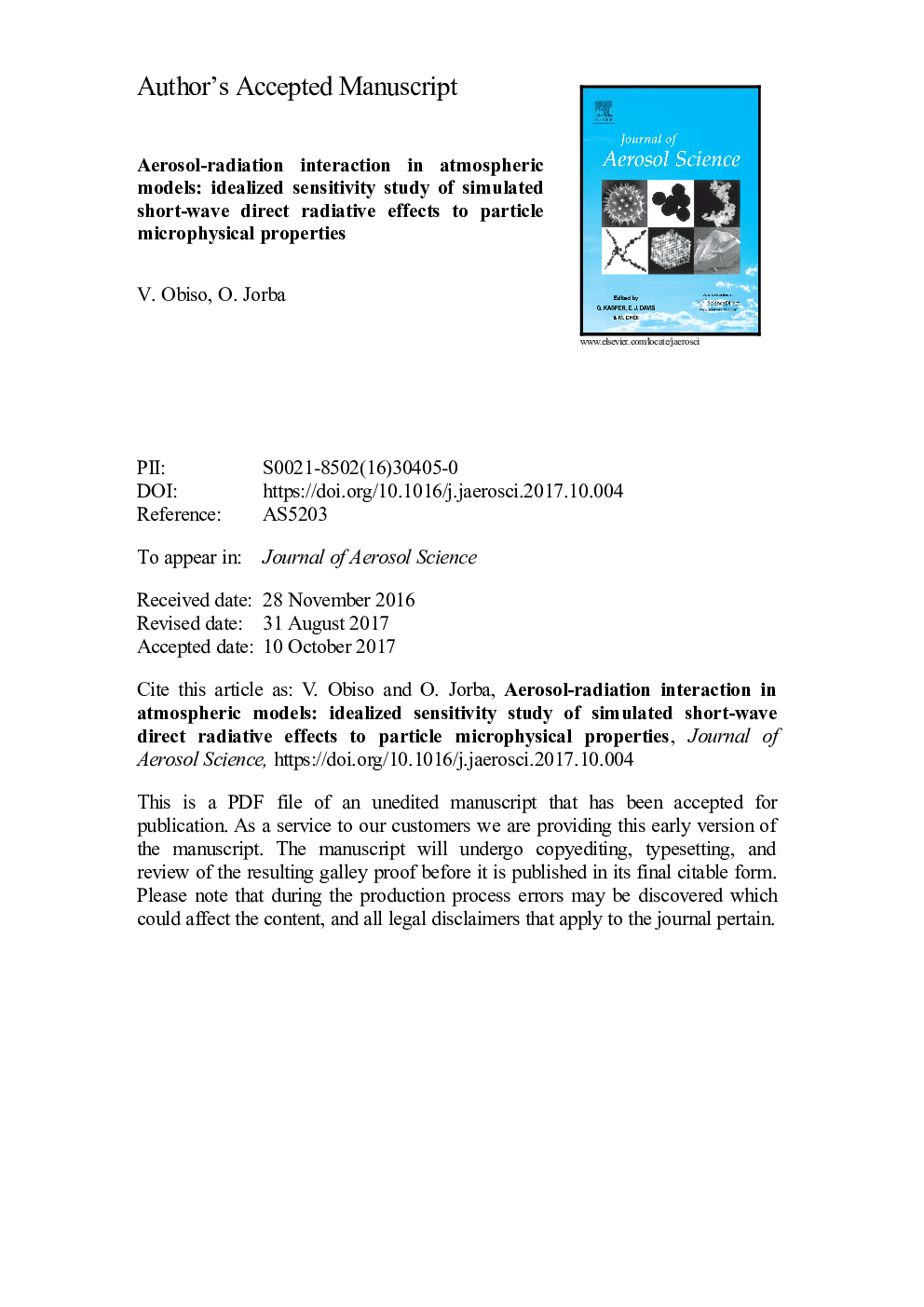| Article ID | Journal | Published Year | Pages | File Type |
|---|---|---|---|---|
| 8865324 | Journal of Aerosol Science | 2018 | 29 Pages |
Abstract
We assessed the impact of the microphysical parameterization of natural and anthropogenic aerosols on simulated short-wave radiative effects due to Aerosol-Radiation Interaction (ARI). Layer radiative properties (optical depth, single scattering albedo and asymmetry factor) of dry mineral dust, organic carbon and a black carbon-sulfate mixture have been calculated with a T-matrix code in the short-wave spectral region, after perturbing relevant particle microphysical properties (size distribution, refractive index, mixing state). For each aerosol species, an idealized atmospheric layer and three events of increasing intensity have been set. Then, short-wave direct radiative effects (clear-sky) have been simulated at the top-of-atmosphere (TOA) and at surface (SFC) using the radiative transfer model RRTMG_SW (widely used in atmospheric models), separately for each aerosol species. We observed considerably variable impacts of the particle microphysical perturbations on the layer radiative properties for mineral dust and organic carbon, mainly due to the different sizes of the two species. For the black carbon-sulfate mixture, the single scattering albedo has been found to be much lower in the internal mixing case. Regarding the direct radiative effects, we observed perturbation-induced variability ranges (evaluated against the base net fluxes in absence of aerosols) always within the perturbation range set for the particle microphysical properties (±20%â40%). This work, therefore, quantitatively demonstrates that small uncertainties on the aerosol microphysical parameterization propagate on the simulated direct radiative effects mainly with a loss of strength. Considerable perturbation-induced absolute variations of the direct radiative effects have been found (above all for large aerosol amounts), which could significantly affect the model assessments of the ARI radiative effects and therefore meteorological forecasts and climate predictions.
Keywords
Related Topics
Physical Sciences and Engineering
Earth and Planetary Sciences
Atmospheric Science
Authors
V. Obiso, O. Jorba,
